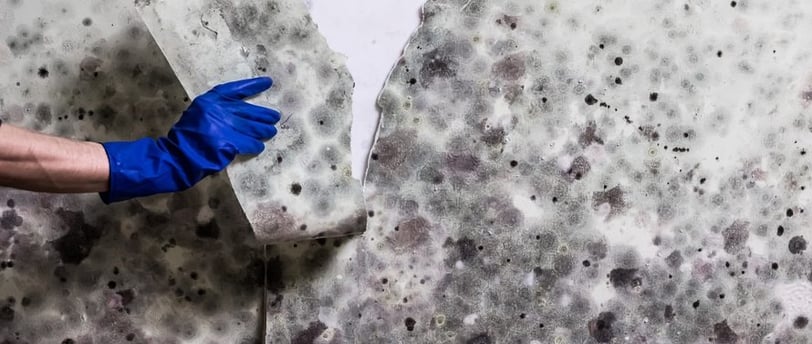Mastering Mold Remediation: Strategies for a Healthy Home
Mastering Mold Remediation
11/28/20233 min read


Introduction:
Mold is a persistent foe that can silently infiltrate homes, posing health risks and causing structural damage. Effective mold remediation is crucial for maintaining a healthy living environment. In this comprehensive guide, we'll explore key strategies employed by restoration specialists to tackle mold infestations and restore homes to their optimal condition.
Section 1: Understanding Mold
Before delving into mold remediation strategies, it's essential to understand the nature of mold and its potential impacts:
1.1 What is Mold?
Mold is a type of fungus that thrives in damp and humid conditions. It reproduces through airborne spores and can grow on various surfaces, including walls, ceilings, and even within HVAC systems.
1.2 Health Impacts
Exposure to mold can lead to respiratory issues, allergies, and other health problems. Certain molds produce mycotoxins, which can be particularly harmful to individuals with compromised immune systems.
Section 2: Assessing the Extent of Mold Infestation
The first step in mold remediation is a thorough assessment to determine the extent of the infestation:
2.1 Professional Inspection
Engage a certified mold inspector to assess the scope of the problem. Professionals use specialized equipment to identify hidden mold and measure moisture levels.
2.2 Air Quality Testing
Conduct air quality tests to identify mold spore levels. This information helps determine the severity of the infestation and guides remediation efforts.
Section 3: Creating a Remediation Plan
Once the extent of the mold problem is identified, a detailed plan is formulated for effective remediation:
3.1 Containment Strategies
Isolate the affected areas to prevent the spread of mold spores. This may involve sealing off sections with plastic sheeting and using negative air pressure to contain airborne spores.
3.2 Removal of Contaminated Materials
Remove and discard materials that cannot be salvaged, such as severely damaged drywall and insulation. Thoroughly clean and disinfect salvageable materials.
Section 4: Mold Removal Techniques
Effective mold removal is a critical aspect of remediation. Different techniques are employed based on the type of material and severity of the infestation:
4.1 Scrubbing and Sanding
Mechanical removal of mold from surfaces using scrub brushes and sanding. This is effective for hard, non-porous surfaces.
4.2 HEPA Vacuuming
Use High-Efficiency Particulate Air (HEPA) vacuums to capture mold spores during the cleaning process. HEPA filters prevent the release of spores back into the air.
4.3 Dry Ice Blasting
For stubborn mold on surfaces like wood or concrete, dry ice blasting is employed. This technique uses compressed air to propel dry ice particles, effectively removing mold without causing damage to the substrate.
Section 5: Mold Prevention Strategies
Preventing the recurrence of mold is crucial for long-term success. Implement the following strategies to create an inhospitable environment for mold growth:
5.1 Moisture Control
Address underlying moisture issues. Fix leaks, improve ventilation, and maintain indoor humidity levels below 60% to discourage mold growth.
5.2 Proper Ventilation
Ensure proper ventilation in bathrooms, kitchens, and other areas prone to high humidity. Exhaust fans and dehumidifiers can be valuable tools in controlling moisture.
Section 6: Biocide Application
Biocides are chemical substances that can kill or inhibit the growth of mold. However, their use requires careful consideration and adherence to safety guidelines:
6.1 Appropriate Biocide Selection
Choose biocides specifically formulated for mold remediation. Consult with a professional to ensure safe and effective application.
6.2 Application Techniques
Apply biocides using approved methods, such as spraying or fogging. Protective gear and proper ventilation are essential during the application process.
Section 7: Professional Assistance
In complex mold remediation scenarios, seeking professional help is advisable:
7.1 Mold Remediation Specialists
Engage the services of certified mold remediation specialists. Professionals have the expertise, equipment, and experience to handle extensive mold infestations safely and effectively.
Conclusion:
Mold remediation is a complex process that requires a strategic and comprehensive approach. By understanding the nature of mold, assessing the extent of infestation, creating a remediation plan, employing effective removal techniques, implementing prevention strategies, and considering professional assistance when needed, homeowners can reclaim their living spaces from the clutches of mold. Remember, mold remediation is not just about eliminating visible growth; it's about creating a healthy and mold-resistant environment for the long term.
A-Z Dryout
3260 N Hayden Rd STE 210 Scottsdale. Arizona 85251
(480) 617-0978
azdryout@gmail.com
